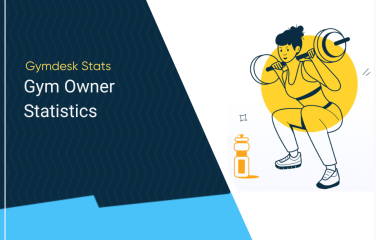Adding and Managing Content in the Member Portal
Gymdesk provides streamlined content management for your member portal that gyms can use to add new posts, manage existing content, customize access, and more. In this article, we’ll go over the step-by-step process of how you can do that. Let’s get started!
The Content Management Dashboard
To access the “Content Management” dashboard, hover over the left-side panel, click “Members,” and then click “Content.”
Managing Existing Content
On this page, you’ll have options for different actions. These options include “Posts,” “Archive,” “Add New Post,” and “Settings.” Let’s cover what each of you can do with each option, one by one.
With the “Posts” option, you can see the existing posts you have made along with their category, current status, and the most recent update date.
If you can’t find a post you’re looking for, you can enter the title in the “Search Bar” and click on the “Filter” button to narrow down the results.
Once you’ve found the post you were looking for, you can perform different actions for it right from the dashboard. These actions include editing that post, publishing/unpublishing it, archiving it, or duplicating or deleting it.
If you choose to archive a post, it will be moved to the “Archive” tab where you can perform the same actions mentioned above.
Now, let’s look at how you can add new content and the options you have!
Adding New Content
Before we proceed, what you need to know is that when you create a new post, you have the option of uploading content in multiple different formats that include text content, pictures, videos, and PDF files. Apart from that, you can also permit and restrict access based on different factors such as member status and category.
To add new content, first you need to click the “Add New Post” option.
This will take you to the “Add Post” page where you can add the content and make all the required configurations.
Here, you can start by adding the title for the post, and once you’ve done that, you can move on to adding the content. If you have text content, you can simply paste it into the text box and format it as needed using the available options.
To add a video, click the “Video” button.
Now, in the pop-up that appears, enter the URL of the video (for example, from YouTube or Vimeo) and choose the width and height.
If you want to embed a video, then click the “Embed” option and paste the embed code.
If you want to add a video from an alternative source, click the “Advanced” option and then enter the URLs as required.
After you have done that, click “Save.”
If you want to add an image or a PDF file, simply click the picture icon, and then upload an image or PDF from your device or choose one from the gallery.
Now, you can hover over to the “Category” section and then choose, based on the option available, you can decide who has access to the content. Here, the categories are basically the buckets for the content, and the “Members” section has options, allowing you to control who has access to the content.
To do this, click open the dropdown options under “Members.” You can choose to have the content accessible to all users or only to those who are active. Apart from that, you can also choose whether you want to have the content shown to visitors and members or just have it be accessible to either members or visitors.
Once you’ve done that, you can click the “CREATE POST” to add the new content.
Content Settings
Apart from that, you can also access the content settings and add custom protocols and parameters.
On the “Settings” page, you can choose between “Content Presentation” and “Content Category”
In the “Content Presentation” settings, you can manage the presentation layout and modify things like the title that should appear for members in the menu and the portal, the layout, and the content order.
In the “Content Category” settings, you can choose to add a new category for the content you want to upload.
That’s all you need to know when it comes to adding new content and managing existing pieces in the Gymdesk content portal.

